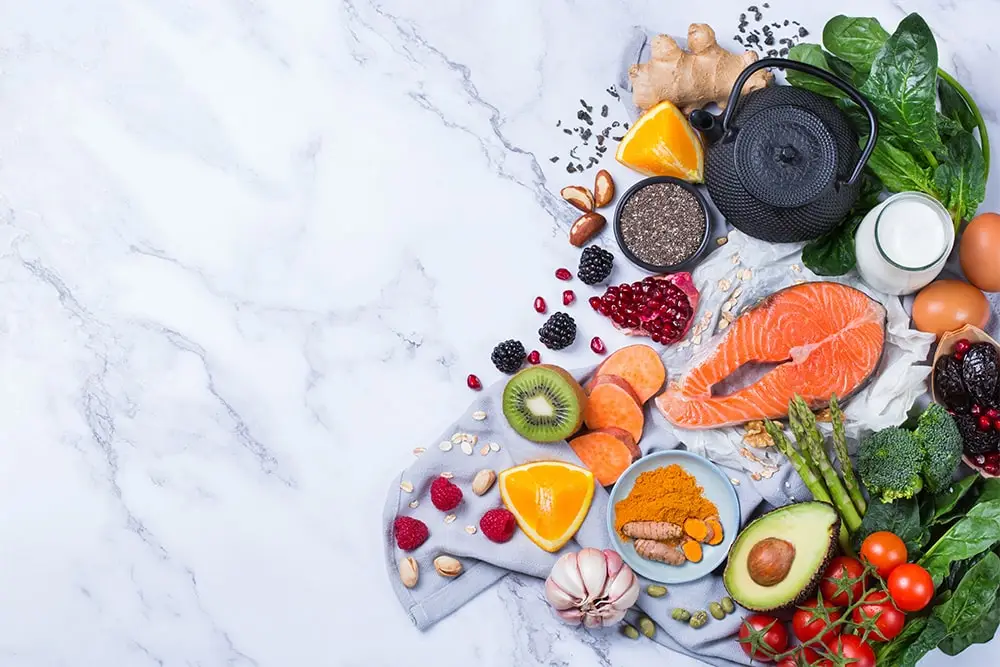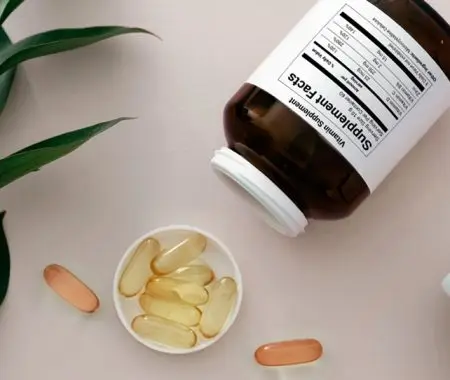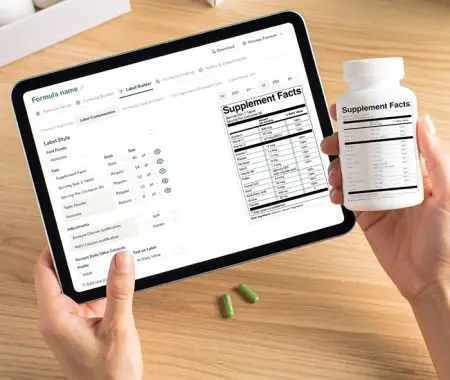In the United States, diet-related chronic conditions such as diabetes, morbid obesity, and heart disease are continually on the rise. In response, the Food and Drug Administration (FDA) finalized crucial updates to the “healthy” nutrient content claim regulations in December 2024. This marks the first comprehensive revision to these standards in decades and aims to face the challenge of addressing and preventing more diet-related fatalities.
While many food products display nutrition facts labels, consumers often struggle to identify nutritious choices quickly and tend to choose nutritionally inferior food products. The new voluntary labeling program addresses this by allowing manufacturers to use the “healthy” claim on qualifying products to assist consumers.
These changes shift the focus from individual nutrients to whole food groups, so naturally nutritious foods qualify while strategic limits are set on levels of saturated fat, sodium, and added sugars. This article will guide you through the latest initiative and its significant step toward improving public health through increased transparency and consumer education in the food industry.
Understanding the Evolution of FDA’s “Healthy” Definition

The FDA’s definition of “healthy” concerning food labeling has undergone a significant shift. Originally focused on individual nutrients, nutrient content claims were designed primarily around limiting total fat, saturated fat, and cholesterol while requiring minimum nutrient levels to be met. However, this approach inadvertently excluded many nutritious whole foods like nuts, avocados, and heart-healthy fatty fish.
The updated definition in 2024 marks a shift in evaluating the healthfulness of foods and aligns with current nutrition science and official dietary guidelines for the American population. It particularly benefits consumers who may have limited time when shopping in grocery stores or the nutrition knowledge to make better food choices. The integration with updated Nutrition Facts label requirements also creates a comprehensive approach to help manufacturers communicate nutritional benefits more effectively.
What Makes a Food Product “Healthy”? Understanding the New Requirements
Under the new FDA guidelines, qualifying for “healthy” nutrient content claims requires meeting two primary criteria:
- The food product must contain meaningful amounts of recommended food groups (Fruits, Vegetables, Whole Grains, Protein, and Dairy)
- Foods must stay within specified nutrient limits.
This approach ensures that “healthy” labeled foods contribute to a balanced dietary pattern rather than simply meeting individual nutrient thresholds. The removal of total fat restrictions represents one of the most significant changes, acknowledging that certain types of fats play essential roles in a healthy diet. This modification allows nutrient-rich foods like salmon, nuts, and olive oil to now qualify for the claim.
Specific Nutrient Limits

Research shows that 77% of American diets exceed saturated fat recommendations, 90% exceed daily sodium limits, and the CDC found that over 85% have dietary patterns low in fruit and vegetables. The updated regulations have, therefore, stated that there are category-specific limits for these three key nutrients:
Saturated fat: Limits vary by food type but cannot exceed:
- Individual foods: 2g
- Mixed products: 2g
- Meals: 4g
- Note: Saturated fat inherent in nuts, seeds, soy products, and seafood does not count toward these limits
Sodium: Limits vary by food type but cannot exceed:
- Individual foods: 230mg (10% DV)
- Mixed products: 345mg
- Meals: 690mg
Added sugars: Limits vary by food type but cannot exceed:
- Individual foods: 2.5g
- Mixed products: 5g
- Meals: 10g
These limits are calculated based on standardized serving sizes, ensuring consistent application across similar products. For example, a cereal must contain ≤2g of saturated fat per RACC and ≤2.5g per 50g if RACC is small.
Food Groups and Examples
The new definition expands the range of foods that can bear the “healthy” claim, particularly benefiting whole, nutrient-dense foods. Budget-conscious options, including canned fruits and vegetables, certain peanut butter, frozen fruits, and other produce, may also meet the criteria when they adhere to the nutrient limits.
Products must contain minimum amounts of at least one food group:
- Individual foods: Must contain 1 food group (fruits, vegetables, whole grains, protein, and dairy)
- For example:
- A container of plain Greek yogurt (contains 2/3 cup of dairy)
- An apple (contains 1/2 cup of fruit)
- A serving of canned tuna (contains 1 oz of protein)
- Mixed products: Must contain 1 food group but that 1 needs to come from at least two different food groups, with each food group contributing at least “1/4” to the total
- For example:
- A granola bar containing 1/4 cup dried cranberries (1/4 fruit) must also contain 1/4 oz almonds (1/4 protein)
- A snack pack with 1/4 cup baby carrots (1/4 vegetable) must also contain 1/4 cup cottage cheese (1/4 dairy)
- An oat bran bar with 1/4 oz whole grains (1/4 grain) must contain 1/4 cup raisins (1/4 fruit)
- Meals: You need 3 full servings of food groups total, and these must come from at least 3 different food groups, with each group contributing at least half a serving.
- For example, imagine a dinner plate:
- 1 serving of chicken (protein group)
- 1 serving of rice (grain group)
- 1 serving of broccoli (vegetable group)
- This works because we have 3 total servings, and each group contributes at least half a serving.
The requirements for mixed dishes and combination foods focus on meaningful contributions from recommended food groups. For instance, a frozen meal might qualify by containing substantial portions of vegetables and whole grains while meeting the specified limits for saturated fat, sodium, and added sugars.
See How FoodLabelMaker Can Help You
Implementation Timeline
The Food and Drug Administration has established a three-year compliance period for manufacturers to adapt to the new “healthy” claim requirements, with the deadline being set for December 2027. This extended timeline acknowledges the complexity of product reformulation, packaging updates, and supply chain adjustments that manufacturers may need to undertake.
While compliance is mandatory by the deadline for those choosing to use the claim, manufacturers can voluntarily adopt the new criteria earlier. This flexibility allows companies to use the updated “healthy” claim as a marketing advantage and spread out implementation costs over time. During this transition period, products may use either the old or new criteria, but not both simultaneously.
Compliance Steps
Manufacturers looking to use “healthy” nutrient content claims must implement a comprehensive compliance strategy:
- Conduct thorough product assessments against new criteria
- Update product packaging and marketing materials
- Maintain detailed documentation of nutrient content and whether food groups are represented in a specific food product
- Establish quality control procedures to ensure ongoing compliance
- Review and update systems to support claim verification
Future of Food Labeling

The FDA’s updated claim represents just one component of a broader initiative to modernize food labeling. The agency is currently developing a standardized front-of-package symbol that manufacturers could use to indicate products meeting the “healthy” criteria, similar to that of Mexico, making nutritious choices even more apparent to consumers.
Food Label Maker continues to support manufacturers through these evolving requirements with our comprehensive food labeling solutions. Our nutrition breakdown features provide you full access to your recipe’s analytics, helping you see what ingredient is driving certain nutrients up or down and allowing you to reformulate your recipe accordingly.
Our label maker will then present this and other essential nutritional information on a clear, compliant food label. This determines whether your food product needs to be reformulated to meet the current criteria of being “healthy”.
Conclusion
This update represents a pivotal shift in nutrition labeling regulations, offering manufacturers new opportunities that help consumers make more informed choices to reduce the rise in health-related conditions. With the 2027 compliance deadline approaching, manufacturers should begin evaluating their products and nutrient content claims against the new criteria and plan any necessary reformulations.
Food Label Maker’s expertise and tools can help navigate these changes efficiently, from initial assessment through to product implementation. The focus on food groups rather than just nutrients, combined with ongoing FDA initiatives like front-of-package labeling, signals a broader movement toward more transparent and accessible nutrition information in the food industry.
FAQs:
What is morbid obesity?
Morbid obesity occurs when an individual’s Body Mass Index (BMI) exceeds 35 or 40, or when they are more than 100 pounds over their ideal body weight. Studies from 2017 found that in the United States, about 9.2% of adults in the US have severe obesity.
The FDA’s updated “healthy” claim regulations aim to help combat obesity by making it easier for consumers to identify nutritious food choices. While labeling alone cannot solve the obesity crisis, clear nutrition information helps consumers make more informed decisions about their food choices, supporting overall public health initiatives.
What specific nutrient criteria must products meet to qualify for the “healthy” claim?
For a product to qualify for the “healthy” claim, it must meet both food group and nutrient requirements:
- Food Groups: Products must contain a meaningful amount of at least one recommended food group (fruits, vegetables, whole grains, dairy, or protein foods).
- Nutrient Limits:
- Saturated Fat: Limits vary by category (e.g., stricter for snacks than main dishes)
- Sodium: Category-specific limits that consider both health impact and food processing needs
- Added Sugars: New restrictions aligned with current dietary guidelines
For example, salmon can now qualify despite its fat content because it provides important nutrients and healthy fats, while a breakfast cereal would need to contain whole grains and stay within all nutrient limits to use the claim.
How does the FDA’s “healthy” claim align with other global healthy food standards?
The updated “healthy” nutrient content claims share similar principles with other international standards but have some key differences:
- Canada: Has a comprehensive system of different health claims (nutrient content, function claims, disease risk reduction, and therapeutic claims) that must be supported by scientific evidence and approved by Health Canada/CFIA
- European Union: Requires all health claims to be scientifically validated by EFSA and authorized by the European Commission, focusing on specific proven relationships between food and health.
- Mexico: Uses mandatory front-of-package black octagon warning labels for products exceeding nutrient thresholds like sugars, sodium, and fats, taking a more direct consumer warning approach than the FDA’s positive messaging system.
For manufacturers exporting to multiple markets, products may need to meet different regulatory criteria depending on the country of sale. While there is a global trend toward promoting whole foods and limiting nutrients of concern, specific requirements vary by region. Companies should consult regional regulations and nutrition experts when planning to sell or distribute their products internationally.



